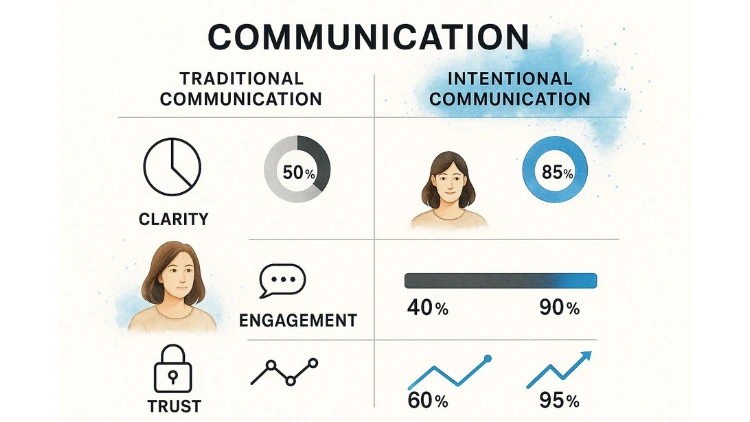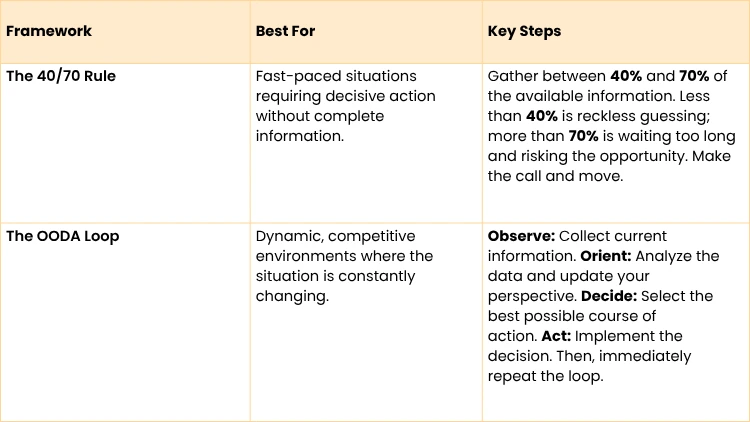How to Develop Leadership Skills and Excel in Your Career

Developing your leadership skills is a conscious process. It’s about deliberately honing your ability to influence, communicate, and make tough calls. Let's get one thing straight: the whole "natural-born leader" idea is a myth. Real leadership is forged through practice, honest feedback, and a real commitment to growth. That means it’s within reach for anyone willing to do the work.
Jump To Section

Earn As You Learn
Earn 25% commission when your network purchase Uplyrn courses or subscribe to our annual membership. It’s the best thing ever. Next to learning,
of course.
Why Developing Leadership Skills Is No Longer Optional
In the modern workplace, leadership isn't a title—it's an essential skill. It’s what drives team success, shapes a positive culture, and puts you on the fast track in your own career, no matter your job title. Companies are hungry for people who can inspire action and guide their peers, not just manage a to-do list.
But there’s a big gap between the need for good leaders and how many are actually out there. The numbers don't lie. Companies that invest in leadership development see a 25% bump in business outcomes and a 20% increase in overall performance. Yet, a shocking 77% of organizations admit they have a leadership gap. These leadership development statistics paint a clear picture of a massive opportunity.
The Real-World Impact on Your Career
For you personally, building these skills is how you become indispensable. It's the difference between just doing your job and truly driving results.
Here’s what it looks like in practice:
- Elevated Team Performance: A great leader is a force multiplier. They bring clarity to goals, knock down roadblocks, and create an environment where people actually want to do their best work. This is where mastering effective leadership strategies for performance management becomes a game-changer.
- Accelerated Career Growth: When you step up and lead, you’re signaling you’re ready for more. It puts you on the radar for promotions, high-stakes projects, and bigger responsibilities.
Think of it this way: investing in your leadership skills isn't just about polishing up some "soft skills". It's a strategic career move that builds a foundation for long-term success, delivering real, measurable results for your team and for you.

Mastering Communication to Inspire Real Action
Great leaders aren't just great talkers. They're master communicators. It’s a subtle but crucial difference. Anyone can give an update or delegate a task, but a true leader creates a dialogue that builds trust and lights a fire under their team.
When communication becomes an afterthought, you can feel the energy drain from a room. People feel disconnected, motivation tanks, and the whole mission starts to feel blurry.
This is more than just a soft skill; it's a strategic necessity. The data backs this up. Recent studies have shown a shocking drop in employee trust for managers, plummeting from 46% down to just 29%. A gap like that is almost always rooted in a communication breakdown.
Just look at the difference a deliberate approach makes. Shifting from just talking at your team to intentionally communicating with them creates massive gains across the board.
The numbers are pretty staggering, right? You're looking at nearly double the engagement and a huge boost in clarity. That’s the difference between a team that’s just going through the motions and one that’s truly aligned and moving forward together.

Moving from Theory to Practice
So, how do you actually put this into practice? It starts with a simple shift in mindset: focus on providing context, not just instructions.
- Here's a real-world example: When you're kicking off a new project, don’t just explain the "what". Always, always explain the "why". Instead of saying, "I need this report by Friday", try something like this: "This report is a key piece for the quarterly business review. If we can get it done by Friday, it will give us the ammunition we need to secure a bigger budget for our team next quarter."
- Actionable Insight: At the end of every team meeting, ask two questions: "What was the clearest part of our discussion?" and "What was the muddiest part?" This gives you immediate feedback on whether your message landed.
See the difference? The first is a command. The second is an invitation to be part of something bigger. It builds a sense of shared purpose and makes the work feel meaningful. This is just one of several core principles of business communication that can completely change your effectiveness as a leader.
The goal is to make every interaction count. Use feedback not just to correct, but to coach. Run meetings not just to inform, but to solve problems as a group. When you do this, communication stops being a routine task and becomes your most powerful leadership tool.
Making Sound Decisions Under Pressure
The real measure of a leader isn’t how they perform when things are easy—it’s how they handle tough calls when the clock is ticking and the pressure is on. Great leaders don't just wing it; they have a repeatable process that threads the needle between quick action and smart strategy.
The trick is knowing when you have just enough information to move forward without getting bogged down in "analysis paralysis". You have to develop a knack for cutting through the noise to find the signal.
This is where data becomes your best friend. A leader’s ability to interpret information and spot trends is what separates a gut feeling from an informed choice. To really sharpen this skill, check out this guide on data analysis for managers. Understanding the story your data is telling you gives you a massive advantage in any high-stakes situation.
A Practical Framework For Clearer Choices
Let's make this real. Imagine your team needs a new project management tool. The market is flooded with options, and it's easy to get overwhelmed. Instead of drowning in demos and feature lists, you can use a simple but powerful tool: the decision matrix.
This technique is all about bringing objectivity to a subjective process. Here’s how it works in this scenario:
- Define Your Non-Negotiables: First, get your team together and decide on the must-have criteria. This could be things like budget, ease of use, integration with existing tools, and specific reporting features.
- Weight What Matters Most: Not all criteria are created equal. Assign a "weight" or score to each one based on its importance. Is budget the absolute top priority? Give it a 10/10. Are reporting features a nice-to-have but not a deal-breaker? Maybe that's a 7/10.
- Score the Contenders: Now, evaluate each tool against your weighted criteria. You might find Tool A is a perfect 10 on budget but a dismal 3 on integrations, while Tool B is the exact opposite.
- Actionable Insight: Create a shared spreadsheet for this matrix. It makes the process transparent and allows team members to add their own scores and comments, turning decision-making into a collaborative effort.
This simple exercise forces systematic thinking and pulls emotion out of the driver's seat. It elevates the conversation from "I just like this one more" to a data-backed conclusion that's easy to explain and defend.
To make strategic decisions even more effectively, it helps to have a few different frameworks in your toolkit. They aren't one-size-fits-all; the right one depends on the complexity and urgency of the problem.

Leadership Decision-Making Framework Comparison
Choosing the right framework helps structure your thinking under pressure, ensuring you're not just reacting, but responding with intention.
By bringing your team into the process of defining and weighting the criteria, you’re doing more than just making a decision—you’re building buy-in from the ground up. When people feel their perspective was valued, they become champions for the final choice. This simple shift transforms you from a boss giving orders into a leader building consensus.

How to Empower Others and Build a Stronger Team
Your real measure as a leader isn’t your personal list of wins. It’s the growth and success you foster in the people you lead. This means making a critical shift in your thinking: from "doing the work" to "developing the people who do the work". This is the core of effective leadership.
This all starts with empowerment. And I'm not just talking about delegating the tasks you don’t want to do. Offloading work is simply about clearing your own plate. True delegation, on the other hand, is about handing someone a genuine opportunity to grow, take ownership, and build new skills.
From Task Manager to Talent Developer
Think about the last time you handed off a project. Did you just give them the instructions, or did you share the why behind it—the context, the desired outcome? The difference is massive. A leader who truly empowers understands their role is to cultivate potential, not just manage a workflow.
Here’s a practical example. Instead of just asking a junior team member to pull some data for a report, empower them to own the entire report.
- Provide the "Why": Explain who the report is for and what critical decision it will influence. This gives the task meaning.
- Define Success: Clarify what a great outcome looks like, but resist the urge to dictate every single step of the process. For instance, say "Success is a one-page summary that clearly shows the Q3 sales trend for our top three products", rather than "Use a bar chart and this exact color scheme."
- Offer Support: Let them know you're there for questions. This turns potential roadblocks into valuable coaching moments.
This simple shift transforms a mundane task into a real development opportunity. It builds confidence, skill, and a sense of ownership that you can't get from just following a checklist.
A leader's job is not to have all the great ideas. It's to create an environment where great ideas can happen. This means giving your team the space, trust, and autonomy to contribute in meaningful ways.
Empowerment isn't just a "nice-to-have"—it's a strategic necessity. Some eye-opening research shows that only about 10% of people are considered natural leaders, with another 20% showing some latent potential. This leaves a huge 70% who may never step up unless a leader actively creates opportunities for them to grow. You can dig into more of these leadership development stats here.
Making that leap from manager to mentor is absolutely essential. If you're looking to really sharpen this skill, you should see how you can elevate your team's performance by exploring the differences between managing and coaching. When you empower your team, you're not just getting work done; you're building the next generation of leaders.
Leading Through Change with Confidence
Change is the one thing you can always count on at work. The real test of leadership isn't when things are going smoothly; it's how you steer the ship through the choppy waters of uncertainty. Your confidence—or lack thereof—sets the tone for the entire team.
When you don’t provide clear direction, anxiety and rumors will fill the vacuum. Productivity plummets, and people start pushing back. Your first job is to get out in front of the narrative with total transparency. Be honest and communicate often, even if you don't have all the answers just yet.
A Practical Toolkit for Managing Transition
Getting through a major shift requires more than just a positive attitude. You need a structured, proactive plan to anticipate the friction points before they derail your team. Think of it as turning a period of disruption into a genuine opportunity for growth.
Here are a few tactics I’ve seen work wonders:
- Map Out Your Communications: Create a simple plan outlining key messages, who needs to know what, and when they need to know it.
Practical Example: For an upcoming software migration, your plan might be: 1) Announce the 'why' in Monday's team meeting, 2) Send a follow-up email with the timeline and training links on Tuesday, 3) Hold drop-in office hours on Thursday for questions. - Host "Ask Me Anything" (AMA) Sessions: Carve out dedicated time for open, unfiltered Q&A. It shows you’re not hiding from the tough questions and builds a massive amount of trust.
- Acknowledge the Resistance, Don't Fight It: Change is uncomfortable. Your team needs to know you get it. Simply saying, "I understand why this feels unsettling" can defuse so much tension and open the door for a real conversation.
The most crucial element is modeling resilience. Your team looks to you for cues. If you project calm confidence and a clear path forward, they are far more likely to follow suit.
Promoting from within is a powerful move, especially when things feel unstable. Organizations that cultivate their own leaders see promotions happen 20% faster and sidestep the 61% higher failure rate associated with external hires. Here are some fantastic insights on the power of internal leadership development.
For a deeper dive into the mechanics of guiding your team through big shifts, check out this guide on making change happen.

Creating Your Personal Leadership Development Plan
Becoming a better leader doesn’t just happen. It’s a deliberate process, an ongoing journey of growth that you have to steer yourself. The difference between hoping you’ll improve and actually making it happen is a clear roadmap—your personal development plan.
This whole process kicks off with some honest self-reflection. You need to take a hard look at where you are right now. What are your strengths? Maybe you’re a natural at seeing the big picture but stumble when it’s time to give tough feedback. Pinpointing those gaps is the first real step toward getting better.
Define Your Leadership Goals
Once you have a solid grasp of your starting point, you can set meaningful goals. Fuzzy ambitions like "I want to be a better leader" are useless because you can't measure them. Instead, you need to get specific and focus on concrete actions.
Let’s look at an example:
- Instead of: "Improve communication."
- Try: "I will lead one team meeting per week and will ask for specific feedback on my clarity and ability to foster discussion afterward."
- Actionable Insight: Put a recurring 15-minute appointment on your calendar every Friday to review your progress against your goal. Ask yourself: What went well this week? What was a challenge? What one thing will I do differently next week?
See the difference? The second one is tangible. You either did it or you didn't. Strong self-awareness is the engine here. You can dig deeper into how emotional intelligence shapes effective leadership to really sharpen those goals. If you want a more structured way to put this all together, check out how to build a powerful leadership development framework.
Your plan should be a living document, not something you create once and file away. Revisit it every quarter. Track your progress, celebrate the small wins, and don't be afraid to adjust your goals as you grow.
A personal plan is your own internal leadership program.
Your Top Leadership Development Questions, Answered
As you start your journey toward becoming a better leader, a few common questions always seem to pop up. Let's dig into some of the most frequent ones I hear and get you some practical, no-fluff answers.
How Can I Lead If I Don't Have the Title?
Leadership is about influence, not a title on your business card. The truth is, you can start building leadership skills from any seat in the house by simply taking ownership and showing initiative.
Practical Example: See a clunky internal process that everyone complains about, like the project intake system? Don't just complain. Volunteer to lead a small group to map out the current process, identify three key bottlenecks, and propose a streamlined solution to your manager. This is leadership in action.
When a team discussion hits a wall, don't wait for the manager to jump in. Step up, summarize the different viewpoints you've heard, and propose a concrete next step. These small acts build a reputation as a problem-solver—a natural leader—long before you get any formal authority.
The real shift happens when you go from thinking, "That's not my job" to asking, "How can I help us get a better outcome here?" Influence is earned, one valuable contribution at a time.
What Are the Biggest Mistakes New Leaders Make?
I see new leaders fall into the same couple of traps all the time. The first is micromanaging. It usually comes from a good place—a fear of failure—but it completely crushes your team's autonomy and sends a clear message that you don't trust them.
The second is the complete opposite: being so hands-off that you don't give any real direction. This leaves your team feeling lost, confused, and unsure of what they're supposed to be doing.
Another classic mistake is dodging tough conversations because you want to be liked. This approach always backfires. Small issues fester and blow up into huge problems that tank morale. Your goal isn't to be everyone's best friend; it's to be a leader who is respected for being clear, fair, and effective.
How Long Does It Really Take to See Improvement?
You can actually see small wins almost immediately. Seriously. Try practicing active listening in your very next meeting. Instead of just waiting for your turn to talk, make a point to paraphrase what someone else said to confirm you understood them. You’ll feel the connection get stronger right away.
But real, lasting growth? That’s more of a long game. Meaningful improvement in your leadership abilities comes from consistent practice, constantly asking for feedback, and taking the time to reflect on what’s working and what isn’t. Give it 6 to 12 months of deliberate effort, and you'll see all those small changes compound into significant, undeniable progress.
At Uplyrn, we know that great leaders aren't born—they're built. Our platform is designed to connect you with industry experts and mentors who provide the structured guidance you need to truly excel. Ready to build your leadership toolkit? Explore our courses and get started today.


Leave your thoughts here...
All Comments
Reply